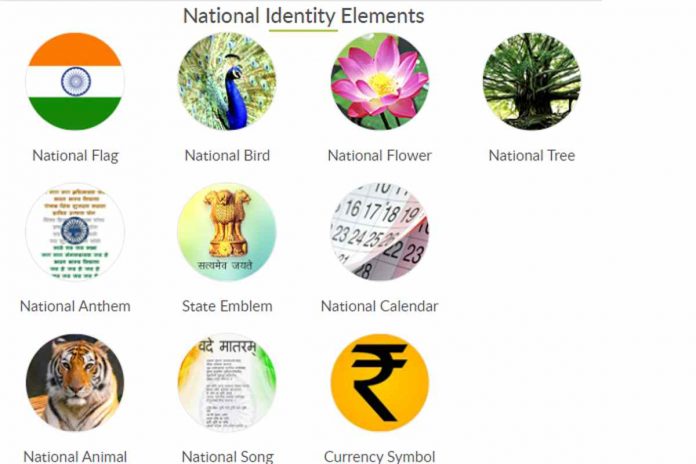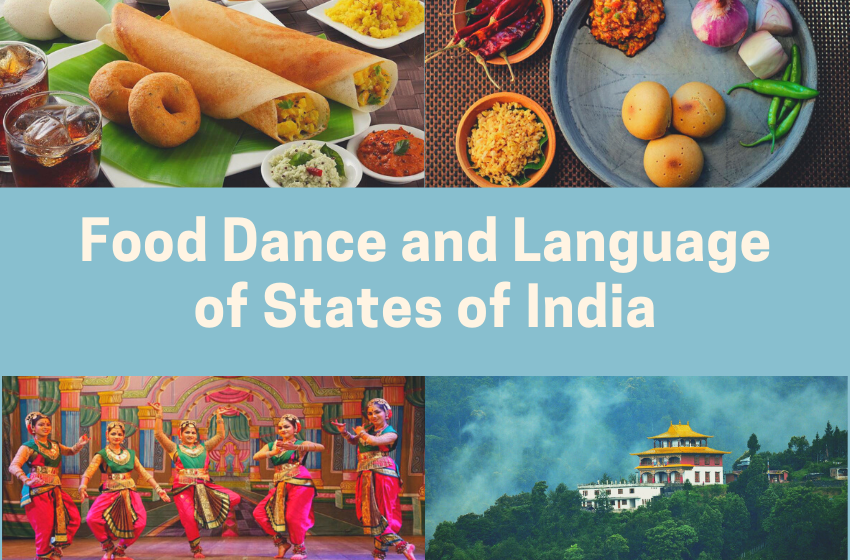We will talk about the components of India’s national identity in this post. The Indian identity and heritage are inextricably linked to these symbols. These National Symbols instil a sense of pride and patriotism in every Indian’s heart, and Indians from all demographic backgrounds are proud of them.
National Identity Elements of India
The National Flag is a country’s most crucial component of its national identity. If we consider the instance of India, there are other components of national identity in addition to the Indian National Flag. Additionally called national symbols, these exist.
The public’s perception of India is determined by ten factors known as the national identity aspects of India. The 10 components of national identity are:
- National Flag – Tricolour (Tiranga)
- National Anthem – Jana-Gana-Mana
- The National Emblem – The state emblem
- The National Bird – Peacock
- The National Animal – Bengal tiger
- The National Flower – Lotus
- The National Tree – Banyan tree
- National Calendar – Saka Calendar
- National Currency Symbol – Indian rupee
- National Song – Vande Mataram
Importance of National Identity Elements
Now, that we know about the 10 national identity elements, let’s have a look at their importance.
1. Arises the feeling of Oneness
As, India is a country with huge diversities in terms of languages, religions, casts, etc. these national identity elements promote a feeling of unity among the Indians. Just like individuals with the same interests can arise a feeling of unity easily, the same is with national identity elements.
2. Tells about the history and culture of India
National identity elements tell a lot about the history and culture of the country. Just like the Indian National flag containing the Ashoka chakra, red and green colours represent the diversity in India.
3. Highlights the values of the nation
The national identity elements represent the values of the nation, what is important to the particular nation, and what they are proud of. Lotus, as the Indian national identity element gives a message that people should rise above worldly attachments just like lotus never get in touch with mud even after spending the whole life span there.
4. Motivates the country’s citizens
Whenever the nation goes through a hard time, these national identity elements encourage the citizens and remind them of the history and how bravely those people stood in front of problems and succeeded.
National Symbols of India
National Symbols of India also known as Indian symbols represents the culture of India and the nature of Indian National identity. They arise a feeling of pride and patriotism in the citizens. There are several Indian symbols picked at various times.
List of National Symbols of India
Here is the list of National Symbols of India –
| Title | National Symbols |
| National Flag | Tiranga |
| National Anthem | Jana Gana Mana |
| National Calendar | Saka Calendar |
| National Song | Vande Mataram |
| National Emblem | National Emblem of India |
| National Fruit | Mango |
| National Animal | Tiger |
| National Tree | Banyan |
| National River | Ganga |
| National Aquatic Animal | Ganga River Dolphin |
| National Bird | Peacock |
| National Currency | Indian Rupee |
| National reptile | King Cobra |
| National Animal Heritage | Indian Elephant |
| National Flower | Lotus |
| National Vegetable | Pumpkin |
| Oath of Allegiance | National Pledge |
1. National Flag
The national flag is a horizontal tricolour with equal amounts of Kesaria (saffron), white, and India green at the top, centre, and bottom respectively. The flag’s width-to-length ratio is two to three. A navy-blue wheel that stands in for the chakra is located in the middle of the white band.
The dominant colour, saffron, represents the nation’s fortitude and strength. The white centre band on the Dharma Chakra denotes harmony and truth. The colour green represents the land’s fertility, growth, and good fortune.
Its shape is similar to the wheel that can be seen on the abacus of Ashoka’s Sarnath Lion Capital. It has 24 spokes, and its diameter is about equal to the width of the white band. The Indian Constituent Assembly approved the National Flag’s design on July 22, 1947.
2. Indian National Anthem
Rabindranath Tagore first wrote Jana-gana-mana in Bengali, and on January 24, 1950, the Constituent Assembly chose its Hindi rendition as India’s National Anthem. At the Indian National Congress’s Kolkata Session on December 27, 1911, it was first sung.
There are five stanzas throughout the whole song. The complete National Anthem is included in the first stanza.
The duration of the national anthem in its whole is roughly 52 seconds. On occasion, a condensed version is performed that just includes the first and last lines of the stanza (playing time is about 20 seconds).
3. India’s National Song
The Sanskrit song Vande Mataram, written by Bankimchandra Chatterji, served as motivation for the people in their fight for freedom. It shares the same standing as Jana-gana-mana; our national anthem. The hymn Vande Mataram, which has played a historic role in the movement for Indian independence, must be honoured equally with Jana Gana Mana and shall have equal standing with it, declared President Dr Rajendra Prasad in the Constituent Assembly on January 24, 1950.
The 1896 meeting of the Indian National Congress was the first political event at which it was sung. The tune was included in Bankimchandra’s best-known book, Anand Math (1882).
4. The State Emblem
A modification of the Ashoka-era Sarnath Lion Capital serves as the basis for the state emblem. In the original, four lions are mounted on an abacus and that are arranged back to back. The frieze of the abacus has sculptures of an elephant, a galloping horse, a bull, and a lion that are all in high relief and are spaced out by wheels above a lotus bell. The Wheel of the Law, which was carved out of a single polished block of sandstone, is the Capital’s top feature (Dharma Chakra).
5. Then National Bird
The National Bird of India, the Indian Peacock (Pavo cristatus), is a colourful bird with a fan-shaped crest of feathers, a white patch beneath the eye, and a long, thin neck. It is the size of a swan. The species’ male is more colourful than the female, with a stunning bronze-green tail and breasts that have 200 long, elongated feathers each. The female loses the tail and is somewhat smaller than the male. She is brownish. Beautiful to watch is the male’s complex courtship dance, which includes fanning out his tail and grooming his feathers.
6. The National Animal
Panthera tigris, the majestic tiger, is a striped mammal. It has a thick, striped, yellow coat of fur. The tiger is proud to be the national animal of India thanks to its impressive blend of grace, strength, agility, and tremendous power.
7. India’s National Flower
The national flower of India is the lotus, Nelumbo Nucifera Gaertn. It is a sacred flower that holds a special place in the mythology and art of ancient India. Since the dawn of time, it has served as an auspicious symbol of Indian culture.
Indian flora is abundant. According to the most recent data, India ranks tenth in the world and fourth in Asia for plant diversity. The Botanical Survey of India has described 47,000 plant species from the about 70% of the geographical region that has been examined so far (BSI).
8. The National Currency
The Indian Rupee is a symbol of India’s international identity for money transactions and the economic strength; of the Indian currency. The Indian Rupee symbol represents Indian ethos. The symbol combines Devanagari “Ra” and Roman Capital “R,” with two parallel horizontal stripes running across the top representing the national flag and the “equal to” sign. On July 15, 2010, the Government of India adopted the Indian Rupee sign.
Udaya Kumar, a postgraduate in Design from the Indian Institute of Technology Bombay, conceptualised and designed the symbol, which was chosen from thousands of concept entries received by the Ministry of Finance through an open competition among resident Indian nationals.
9. The National Tree
Ficus bengalensis, an Indian fig tree, spreads its branches out like young trees across a wide region. The additional trunks and branches are then produced by the roots. This tree is regarded as immortal and plays a significant role in many Indian myths and legends because of its quality and its longevity. The banyan tree continues to be the centre of village life today, and it provides shade for village council meetings.
10. The National Calendar
For the following official purposes, the national calendar based on the Saka Era, with Chaitra as its first month and a typical year of 365 days, was adopted alongside the Gregorian calendar on March 22, 1957:
- Gazette of India.
- News broadcast by AIR (All India Radio)
- Calendars issued by the Indian government.
- Public messaging from the government.
The first day of Chaitra falls on March 22 in regular years and March 21 in leap years, according to the national calendar, which has a constant relationship with Gregorian dates.
Also Read: India in Paris Olympics 2024





